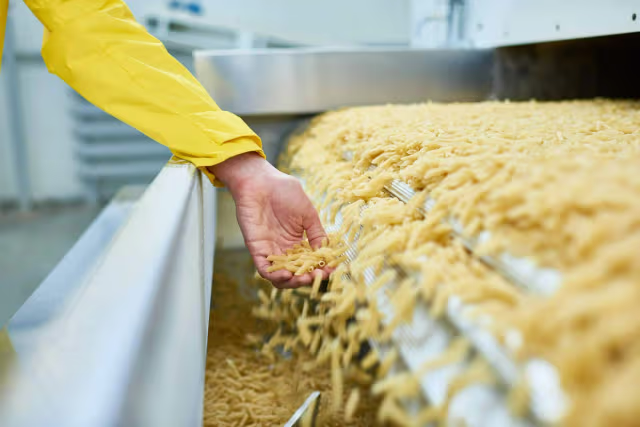- Food Processing Industry
R&D Tax Credits for Food Processing Companies
From product innovation to advanced manufacturing processes, food processing R&D activities qualify for substantial tax credits that can fuel your next breakthrough.

Average Credit Value
$250K - $750K+
Why Food Processing Companies Benefit
The food processing industry's focus on innovation, quality, and safety creates extensive R&D tax credit opportunities
Product Development Credits
Creating new food products, improving recipes, and developing healthier alternatives all qualify for substantial R&D tax credits.
Process Innovation
Improving manufacturing processes, extending shelf life, and enhancing food safety procedures generate significant credit opportunities.
Quality & Safety Research
Developing new preservation methods, packaging innovations, and contamination prevention systems qualify for federal and state credits.
Qualifying R&D Activities
Common food processing industry activities that qualify for R&D tax credits
Product Development & Formulation
- Creating new food products and recipes
- Developing healthier ingredient alternatives
- Formulating plant-based meat substitutes
- Creating allergen-free product variations
- Developing functional foods with health benefits
Manufacturing Process Innovation
- Optimizing production line efficiency
- Implementing automation technologies
- Developing new preservation techniques
- Creating energy-efficient processing methods
- Designing waste reduction systems
Food Safety & Quality Control
- Developing pathogen detection systems
- Creating contamination prevention protocols
- Implementing blockchain traceability
- Designing predictive quality models
- Developing rapid testing methods
Packaging & Preservation
- Creating sustainable packaging solutions
- Developing extended shelf-life technologies
- Designing active packaging systems
- Creating biodegradable materials
- Implementing smart packaging with sensors
This is not an exhaustive list. Many other food processing R&D activities may qualify.
Success Stories
Real examples of food processing companies benefiting from R&D tax credits
$425,000
Natural Foods Corp
Developed innovative plant-based meat alternatives with improved texture and nutritional profiles, creating 12 new products.
$380,000
Fresh Pack Industries
Created intelligent packaging that monitors freshness and extends shelf life by 40%, reducing food waste significantly.
$520,000
Quality Foods Manufacturing
Implemented AI-powered quality control systems that detect contamination 50% faster than traditional methods.
Ready to Transform Your Food Innovation into Tax Savings?
Our specialized team understands the unique challenges and opportunities in food processing R&D. Let us help you maximize your tax savings while you develop the next generation of food products.